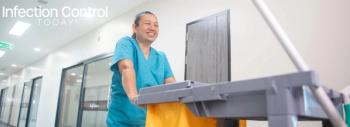
Battling the Bed Bug Epidemic
Moms comforting tuck-them-in-words "Sleep tight, dont let the bed bugs bite" is becoming an impossible dream for millions of people as the world experiences a resurgence of an ancient scourge that is fostering human misery, financial burdens and the risk of exposure to potentially toxic materials. Thats the message from the cover story of the current edition of Chemical & Engineering News (C&EN), the weekly newsmagazine of the American Chemical Society.
In the article, C&EN news editor William G. Schulz points out that bedbugs represent a growing epidemic that is difficult to control. The bugs hide in mattresses, box springs, nightstands, and other areas, emerging at night dine on human blood. Their bites can cause allergic skin reactions, mental anguish, and loss of sleep. Infestations can be a financial burden, with professional extermination sometimes costing thousands of dollars and taking eight weeks or more. Some chemicals that were once effective against the pests, such as DDT, have been banned due to threats to human health and the environment, leaving exterminators with few effective options for controlling the pests, which have developed the ability to shrug-off some pesticides.
But the fight against bedbugs is intensifying. Scientists are looking for new substances to fight bed bugs that are safe and effective. Officials in Ohio "bedbug ground zero are seeking federal government permission to resume use of a pesticide called propoxur that can quickly halt infestations. Propoxur was pulled from the market by its manufacturer after the Environmental Protection Agency (EPA) raised safety and efficacy concerns. For now, a combination of pesticides and preventive measures, such as regular inspection, laundering, vacuuming, removing clutter and sealing up cracks in walls and baseboards are among the best ways to control the bugs, the article notes.
Newsletter
Stay prepared and protected with Infection Control Today's newsletter, delivering essential updates, best practices, and expert insights for infection preventionists.






